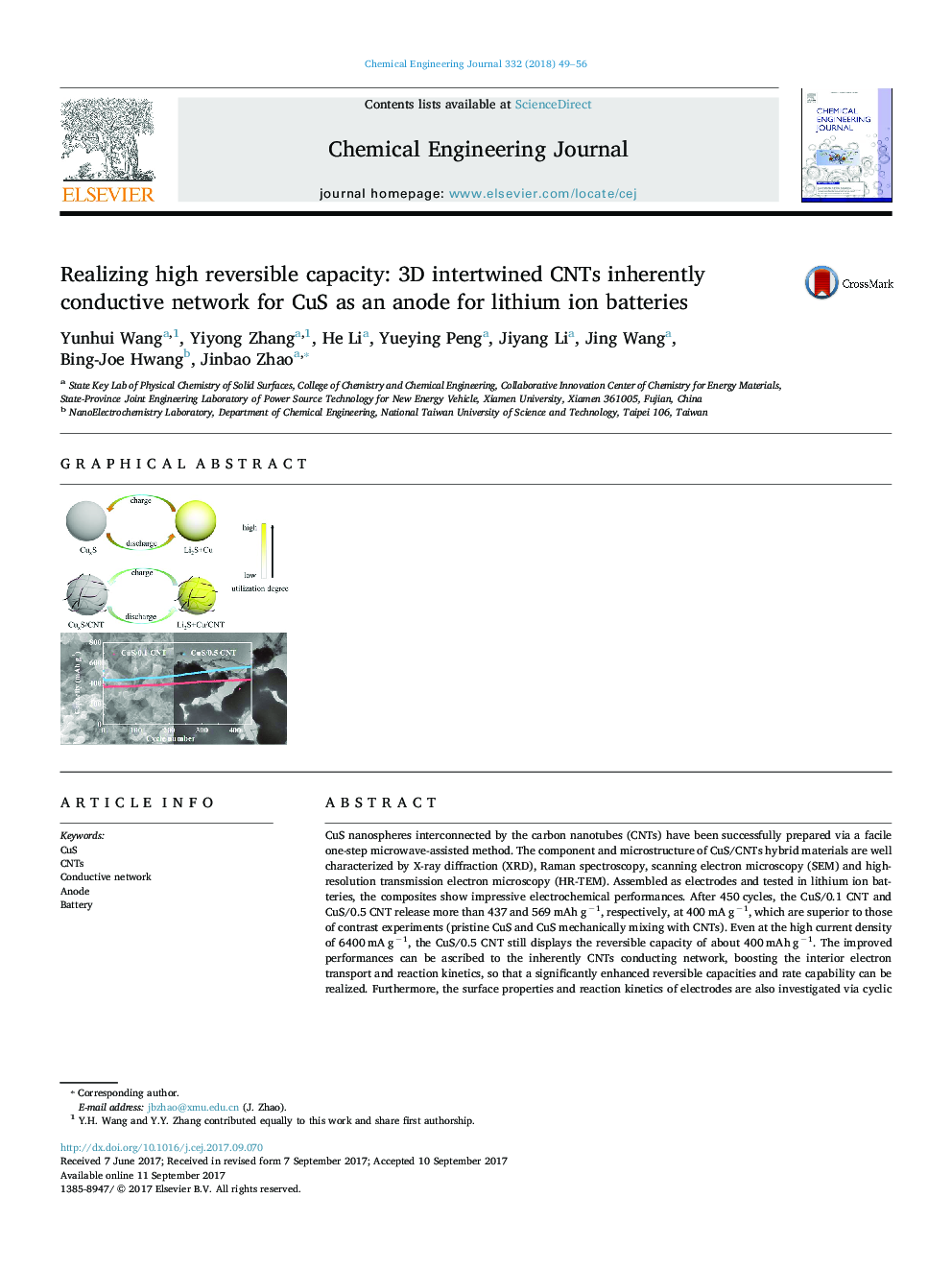| Article ID | Journal | Published Year | Pages | File Type |
|---|---|---|---|---|
| 6464976 | Chemical Engineering Journal | 2018 | 8 Pages |
â¢Use a facile and efficient microwave-assisted synthetic method.â¢3D CuS/CNTs composite with a high reversible capacity.â¢Improved Li+ diffusion coefficient of CuS/CNTs.
CuS nanospheres interconnected by the carbon nanotubes (CNTs) have been successfully prepared via a facile one-step microwave-assisted method. The component and microstructure of CuS/CNTs hybrid materials are well characterized by X-ray diffraction (XRD), Raman spectroscopy, scanning electron microscopy (SEM) and high-resolution transmission electron microscopy (HR-TEM). Assembled as electrodes and tested in lithium ion batteries, the composites show impressive electrochemical performances. After 450 cycles, the CuS/0.1 CNT and CuS/0.5 CNT release more than 437 and 569 mAh gâ1, respectively, at 400 mA gâ1, which are superior to those of contrast experiments (pristine CuS and CuS mechanically mixing with CNTs). Even at the high current density of 6400 mA gâ1, the CuS/0.5 CNT still displays the reversible capacity of about 400 mAh gâ1. The improved performances can be ascribed to the inherently CNTs conducting network, boosting the interior electron transport and reaction kinetics, so that a significantly enhanced reversible capacities and rate capability can be realized. Furthermore, the surface properties and reaction kinetics of electrodes are also investigated via cyclic voltammetry (CV) and galvanostatic intermittence titration (GITT) measurements, proving the enhanced lithium storage properties.
Graphical abstractDownload high-res image (67KB)Download full-size image
